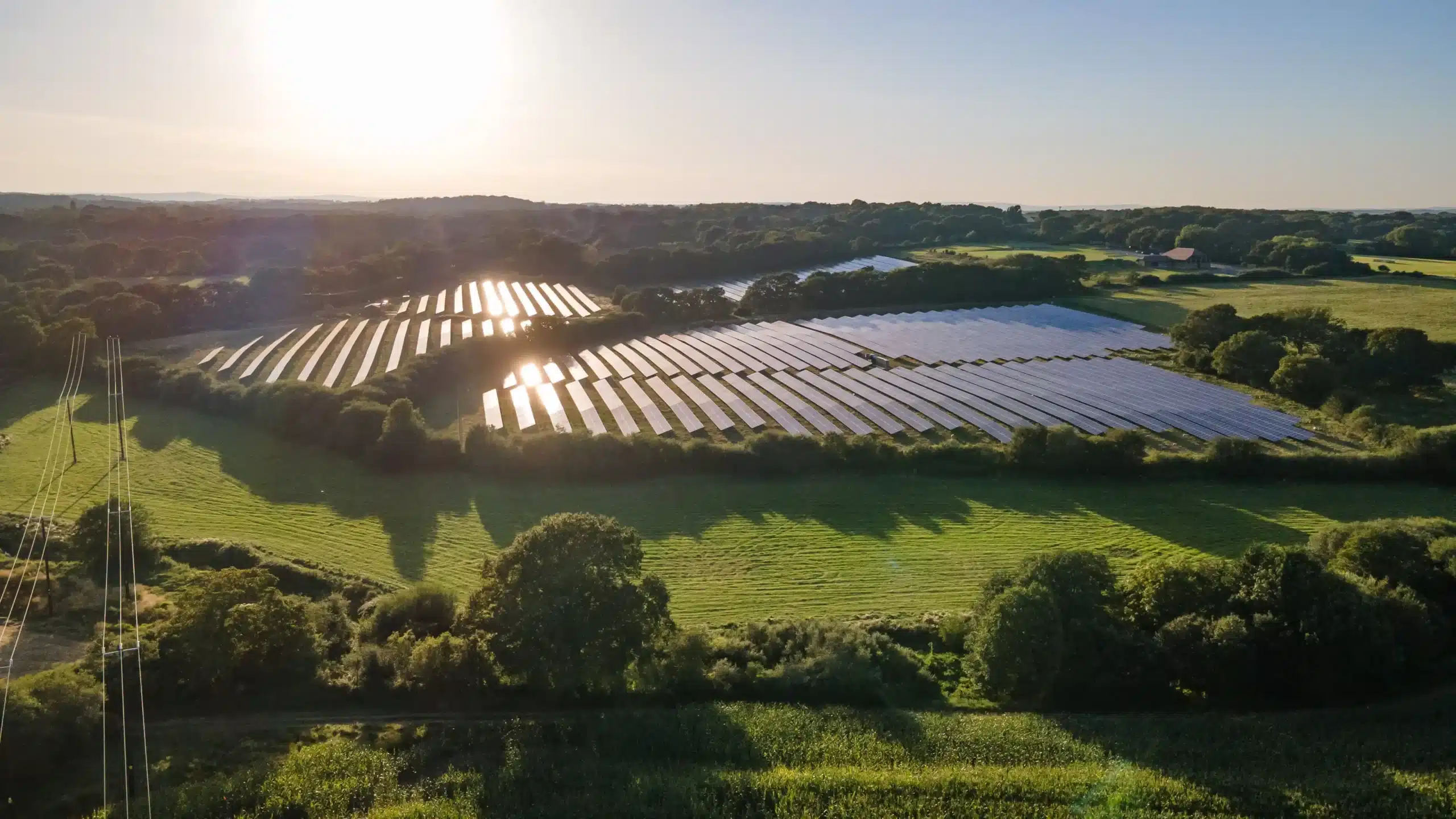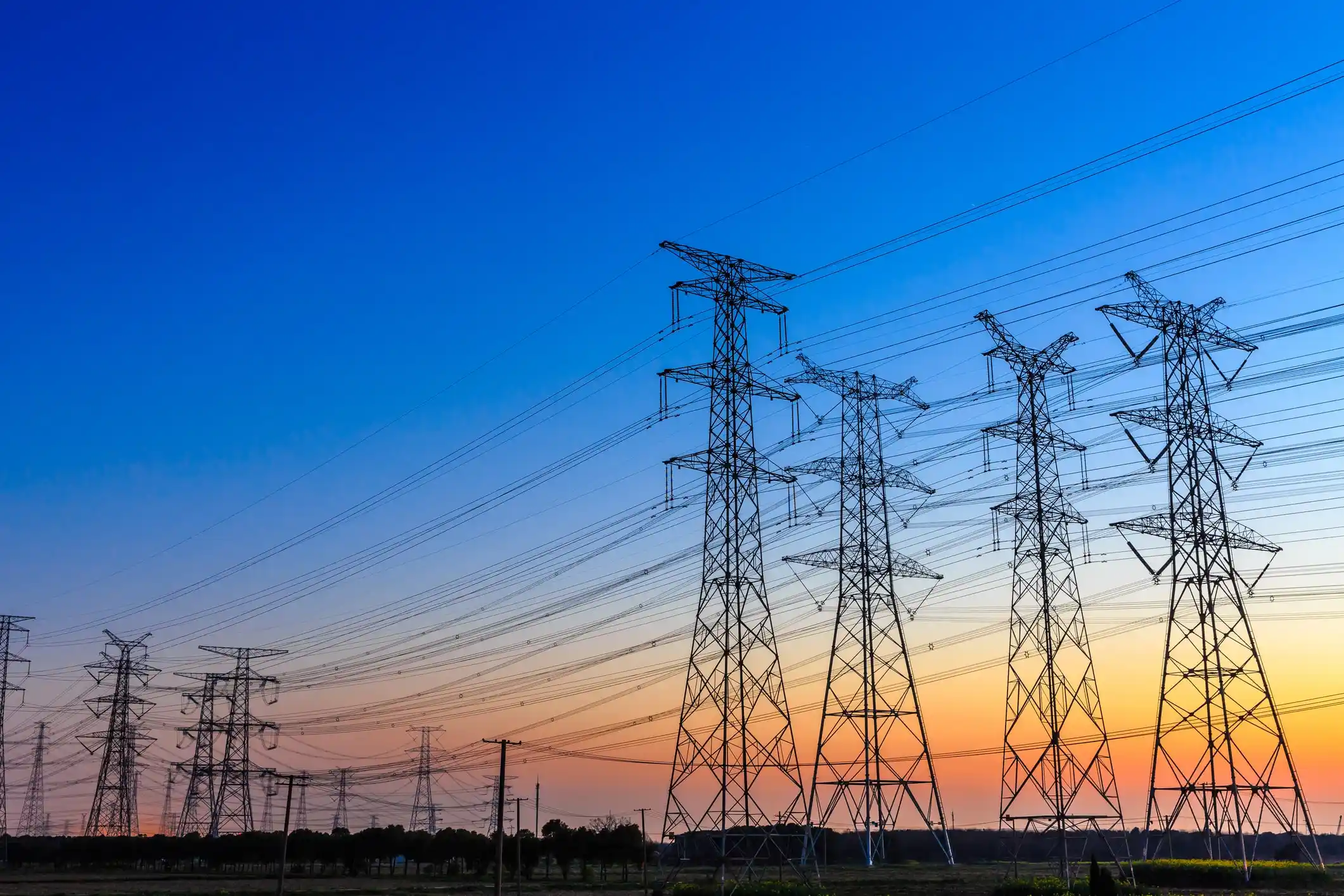POSTED
May 2, 2025
How Weather Affects Solar Energy: Performance, Reliability, and Long-Term Value
Solar energy is more reliable than many think. Panels generate power even in clouds, rain & cold, thanks to advanced tech like bifacial panels, tracking systems & battery storage. While weather impacts short-term output, long-term performance stays strong—making solar a stable, future-ready investment in any climate.

Solar energy is more reliable than many people realize. While it’s easy to assume solar panels stop working when the weather turns cloudy or cold, modern technology keeps them producing power in a wide range of conditions. Investors often wonder how extreme temperatures, cloud cover, and seasonal changes affect solar performance at utility-scale farms. Wonder how weather affects solar energy? The answers may be surprising.
Even in less-than-ideal weather, solar remains a dependable and profitable energy source. This article breaks down how different weather conditions impact solar power generation, the latest advancements improving performance, and why solar remains a smart long-term investment.
How Weather Affects Solar Energy: Sunlight’s Impact
Solar panels harness both direct and diffuse sunlight to generate electricity. While they operate most efficiently under direct sunlight, they continue to produce power even on cloudy days. In overcast conditions, panels typically generate between 10% to 25% of their standard output, depending on cloud density. Interestingly, some cities known for frequent cloud cover, like Seattle and Portland, have thriving solar industries, demonstrating that consistent solar energy production is achievable even in less-than-ideal weather.
Panel Technology and Positioning
Advancements in solar technology have led to the development of bifacial panels, which capture sunlight from both their front and rear surfaces. This design allows them to utilize reflected light from the ground or surrounding surfaces, enhancing overall energy production. According to research conducted by the National Renewable Energy Laboratory (NREL), bifacial panels can achieve significant gains in energy production. For instance, data from June through November 2019 revealed up to a 9% increase in energy production using bifacial panels compared to monofacial ones.
The orientation and tilt of solar panels also play a crucial role in maximizing energy capture. Adjusting the tilt angle to align with the sun’s position can significantly improve performance, especially during different seasons. Incorporating tracking systems that follow the sun’s path throughout the day can further optimize energy production, ensuring panels receive maximum sunlight exposure.
Tracking systems, particularly east-west configurations, can significantly increase energy production which have been shown to boost output by 33.36% to 63% compared to fixed-tilt panels. They also reduce the levelized cost of electricity (LCOE) by approximately 16%. Because of these advantages, single-axis trackers have become the standard in U.S. utility-scale solar. In 2023, 96% of new utility-scale photovoltaic installations used single-axis tracking systems—highlighting the industry’s shift toward greater efficiency.
While solar performs best in direct sunlight, weather is never fully predictable. So how do panels hold up when the skies aren’t clear? Let’s take a closer look at how cloud cover and other low-light conditions affect performance—and how modern systems are built to adapt.
How Weather Affects Solar Energy: Cloud Cover & Solar Energy Efficiency
It’s a common misconception that solar panels stop working when the sun disappears behind clouds—but that’s far from the truth. Even when skies are gray, panels continue producing electricity thanks to diffuse light—sunlight scattered by clouds, fog, or atmospheric particles. While this light is less direct, high-quality solar technology is designed to make the most of it.
High-Efficiency Panels Adapt to Low-Light Conditions
Some of today’s most advanced solar panels are engineered to perform exceptionally well in cloudy or foggy weather. High-efficiency models—such as monocrystalline and next-generation N-Type panels—are built to continue generating power even when sunlight is limited.
These panels use advanced design features that allow them to absorb scattered or diffused light more effectively. Technologies such as PERC (Passivated Emitter and Rear Contact) and TOPCon (Tunnel Oxide Passivated Contact) might sound complex, but their impact is simple: they help the panel make the most of every bit of light—even when the weather isn’t ideal.
Solar Panels Generate Power on Cloudy and Foggy Days
On heavily overcast days, industry estimates suggest that panels can still produce around 10–25% of their typical output. And in foggy conditions, performance can sometimes reach up to 50%—a surprisingly strong number considering the lack of direct sunlight.
Why the difference? It comes down to how the light is scattered. Fog consists of tiny water droplets that diffuse sunlight more evenly, allowing panels to capture a steady stream of light from multiple angles. In contrast, thick cloud cover tends to block or absorb more sunlight, leading to more inconsistent output. While total output decreases, modern panels are built to make the most of available light.
Battery Storage Smooths Out the Gaps
That’s where energy storage comes in. Batteries allow solar systems to store power collected during sunnier periods and use it later when conditions aren’t as favorable. This keeps the power supply more consistent—even when the weather isn’t.
Grid Integration Keeps Power Flowing
In addition to battery storage, strong grid integration ensures that solar systems stay balanced and reliable. When one area is cloudy, another might be sunny. A well-connected grid can shift energy between regions, maintaining stability and supporting consistent output across the network.
How Rain Affects Solar Energy Production
Rainy days do cause a temporary dip in solar production—mostly because of the clouds, not the rain itself. But once the weather clears, panels bounce right back. And here’s the upside: rain actually helps clean solar panels, washing away dust and grime that can build up over time.
That natural rinse can improve efficiency, especially in areas where manual cleaning is costly or infrequent. Still, rain isn’t perfect. It might not remove stickier stuff like pollen, which, if left alone, can reduce panel efficiency by 15% or more. So while rain helps, a good maintenance plan still matters—especially in the spring.
In places that get regular rain, solar panels often stay relatively clean without much effort. In dry, dusty climates, rain is less frequent but more impactful when it does come—helping cut down on how often panels need to be cleaned by hand.
Even during heavy storms, solar panels keep working. They don’t shut down; they just produce less while the sky is dark. And because rainy days are often balanced out by sunny ones, the overall impact on annual energy generation tends to be minimal.
The bottom line? Rain might slow things down briefly, but it also helps keep the system clean—supporting better long-term performance with less effort.
How Extreme Temperatures Affect Solar Panel Performance
Solar panels don’t just respond to sunlight—they respond to temperature, too. As the weather shifts from hot to cold, panel performance adjusts right along with it.
Hot Weather: Slight Drop in Efficiency
Most solar panels are tested at 25°C (77°F), which is considered their ideal operating temperature. As temperatures climb above that, efficiency starts to dip slightly. This drop is measured by the temperature coefficient—usually between -0.2% and -0.5% per degree Celsius. That means for every degree above 25°C, output decreases slightly.
Fortunately, modern panels are designed to withstand high heat, and systems with good airflow or heat-dissipating mounts can help limit the impact. Innovations like porous nanochannel devices have been shown to reduce panel temperatures by an average of 31.5°C, increasing electrical power output by approximately 33%.
Cold Weather: Surprising Performance Boost
Thanks to the negative temperature coefficient of solar panels, cold weather can actually boost efficiency. On clear, freezing days, some systems may produce 5–7% more than their rated output—especially in regions with low ambient temperatures and good sun exposure.
While snow can temporarily block sunlight, panels are often installed at an angle to help shed it quickly. Once the sun comes out, even a thin layer of snow tends to melt and slide off, allowing production to resume with minimal disruption.
Solar’s Resilience Over Time
Weather will always play a role in solar performance—but thanks to smarter technology and reliable energy storage, its impact is manageable. Over the course of a year, dips in production are typically balanced by high-output days, keeping long-term energy generation steady. This long-term consistency is one reason solar remains a smart, scalable investment—even in places where the forecast isn’t always sunny.
Why Solar Remains a Strong Investment—Even When Weather Affects Solar Energy
Solar continues to stand out as a dependable long-term investment, even with the natural ups and downs of weather. That’s because utility-scale projects are strategically developed in regions with stable solar resources. Developers rely on decades of climate data and advanced modeling to forecast energy output—factoring in seasonal trends and regional variability to minimize surprises.
Modern solar systems are also more resilient than ever. Improvements in panel efficiency, energy storage, and grid integration help maintain consistent output, even when the weather is less than ideal.
Unlike fossil fuels, solar avoids the volatility of commodity markets. There are no fuel price spikes—just steady, predictable production. And as technology advances, solar continues to get more efficient and cost-effective over time.
So, while output may dip briefly during cloudy weeks or winter months, the long-term projections hold strong. That consistency makes solar a compelling option for investors seeking stable, future-forward returns.
Whether you’re exploring your first clean energy investment or looking to diversify a larger portfolio, utility-scale solar offers a scalable, sustainable path forward.
Join the Waitlist for Future Investment Opportunities
We’re building a community of individuals and institutions ready to move capital toward clean, reliable energy. If you’re interested in learning more about upcoming opportunities to invest in utility-scale solar development, we invite you to join our waitlist.
Add your name today, and be the first to hear when new opportunities go live.





